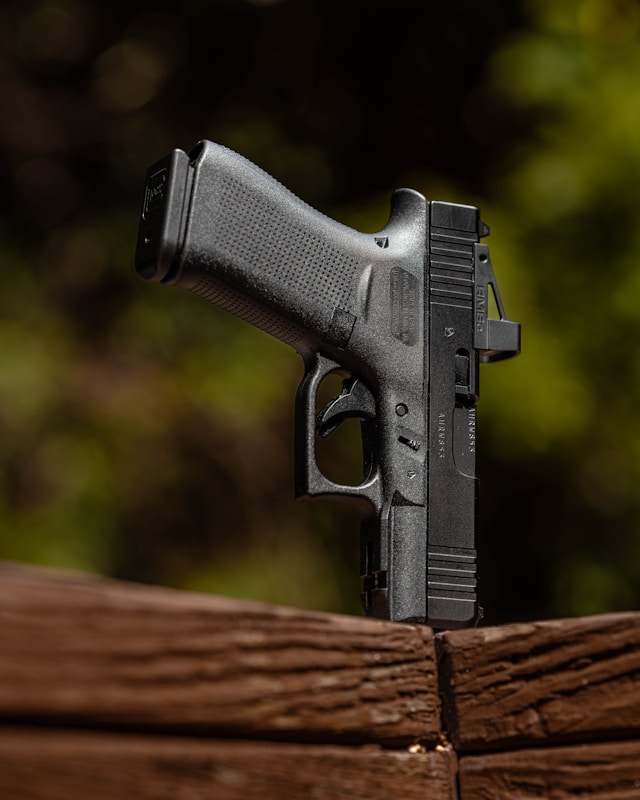Key Takeaways
- Aftermarket triggers can significantly improve the performance of your Glock pistol.
- Enhanced triggers offer better control and accuracy.
- Installation procedures are straightforward but require attention to detail.
- Always select high-quality, reliable components for upgrades.
Introduction to Aftermarket Triggers
When it comes to optimizing the performance of your Glock pistol, aftermarket triggers can be a game-changer. These modifications can provide smoother pulls, shorter resets, and better overall control. A Glock trigger kit is an excellent example of an upgrade that can significantly enhance the shooting experience. In this comprehensive guide, we’ll delve into trigger upgrades, explaining the benefits, the different types available, and the key considerations you must be aware of before purchasing.
Why Upgrade Your Glock Trigger?
Upgrading your Glock trigger can result in noticeable handling and shooting performance improvements. For competitive shooters, a smoother and lighter trigger pull can enhance accuracy and speed, making a significant difference in performance. Enhanced triggers also enable better shot placement, crucial in competitive settings where precision is paramount. Even if you are a recreational shooter, a quality aftermarket trigger’s improved control and comfort can elevate your overall shooting experience and enjoyment.
Types of Aftermarket Triggers
Several aftermarket triggers are available for Glock pistols, each offering unique benefits. The correct decision varies based on your individual requirements and photography technique:
- Flat Triggers: These provide a consistent feel and are favored for their crisp break. Shooters appreciate the predictable reset and minimal pre-travel, resulting in quicker and more precise shots.
- Curved Triggers: Traditional in design, curved triggers offer a comfortable and familiar feel, which can enhance comfort during extended shooting sessions. They are ergonomic, reducing finger fatigue and improving handling.
- Adjustable Triggers: These allow customization of pre-travel and over-travel, giving shooters greater control over their firearms. Adjustable triggers can be tailored to individual shooter preferences, making them a versatile and popular choice.
Installation Process: A Step-by-Step Guide
Installing an aftermarket trigger kit for your Glock is a straightforward process, but it requires attention to detail and careful adherence to instructions. Here are the general steps you’ll need to follow:
- Ensure your firearm is unloaded and cleared of ammunition. Safety should always be the top priority.
- Disassemble the Glock following the manufacturer’s instructions. It typically involves removing the slide, barrel, and recoil spring assembly.
- Remove the existing trigger components, including the trigger bar, trigger spring, and trigger housing.
- Install the new aftermarket trigger components according to the kit’s instructions. It may involve attaching the new trigger bar to the trigger, installing a different spring, and securing the trigger housing.
- Reassemble the Glock and perform a function check to ensure everything works properly. It includes checking for proper fitment, reset function, and smooth operation of the new trigger setup.
Important Considerations
Before diving into a trigger upgrade, consider these critical factors:
- Compatibility: Ensure the trigger kit is compatible with your specific Glock model. Not all triggers fit all models, and using an incompatible trigger can result in malfunctions.
- Quality: Opt for reputable brands known for reliability and durability. Investing in a high-quality trigger ensures better performance and safety.
- Legal Aspects: Check local regulations regarding firearm modifications to ensure compliance. Some jurisdictions have strict rules on what changes are allowed on firearms.
Real-World Benefits: Experiences from the Community
Many Glock owners who have upgraded their triggers report significant improvements. For example, competitive shooters often find they can achieve faster follow-up shots with a reduced reset trigger, which is crucial during timed events. Reports from industry experts also highlight the enhanced accuracy and consistency achieved with high-quality aftermarket triggers. These enhancements benefit not only professional shooters but also professional shooters and recreational shooters looking to improve their skills.
Maintaining Your Upgraded Trigger
Maintaining your upgraded trigger is essential for keeping it in top condition. Clean the trigger components during routine firearm cleaning sessions using appropriate cleaning solutions and tools. Inspect the trigger for wear or damage, paying close attention to the trigger bar, springs, and housing. Proper maintenance guidance from reputable sources provides detailed tips and best practices to ensure longevity and optimal performance.
Conclusion
Upgrading your Glock with an aftermarket trigger can elevate your shooting experience by providing smoother pulls, reduced reset times, and improved overall control. You can enjoy enhanced performance and reliability by selecting the right trigger, carefully following installation procedures, and regularly maintaining your firearm. Consider your specific needs, research thoroughly, and invest in quality components to maximize your trigger upgrade. Whether you participate in competitions or enjoy shooting for fun, an improved trigger can significantly enhance your shooting enjoyment.

